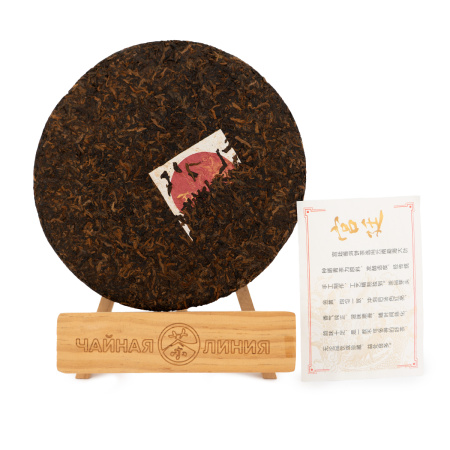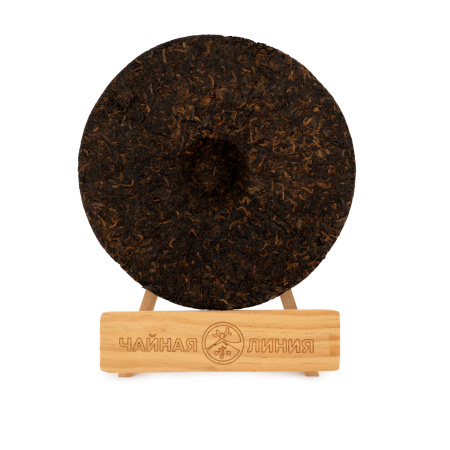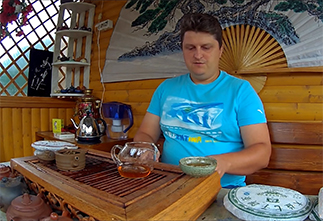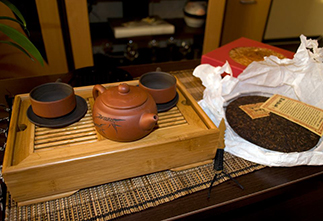-
10 Saturation
-
10 Aftertaste
-
10 Aroma
-
10 Effect
-
10 Balance
-
10 Body
Шу Пуэр 2017 г. "Гунтин" от Юньфусян: Императорский дар Юньнани
Шу Пуэр 2017 г. "Гунтин" от знаменитого завода Юньфусян – это поистине императорский дар из сокровищницы юньнаньских чаев. Созданный из отборного сырья высшего качества, этот пуэр отличается глубоким, насыщенным вкусом и богатым ароматом, достойным императорского стола.
История создания и особенности
Чайный завод Юньфусян (кит. 云福祥, пиньинь Yún fú xiáng) славится своими высококачественными пуэрами, которые производятся по традиционным технологиям. Шу Пуэр "Гунтин" – это результат многолетнего опыта и мастерства чайных мастеров. Для его создания использовалось исключительно сырье высшей категории – мелкие листочки и почки, собранные в 2017 году. Именно такое сырье и позволяет получить чай с нежным, гармоничным вкусом и тонким ароматом, характерным для дворцовых сортов.
- Производитель: Юньфусян – один из ведущих производителей пуэра в Китае.
- Название: "Гунтин" (кит. 宫廷, пиньинь Gōngtíng) переводится как "дворцовый" и указывает на высокое качество сырья и особый способ обработки.
- Сырье: Мелкие листочки и почки, собранные в 2017 году.
- Ферментация: Традиционная ферментация в кучах.
- Прессовка: Блин весом 357 грамм.
- Год прессовки: 2019 год.
Вкус и аромат
Шу Пуэр "Гунтин" обладает глубоким, насыщенным вкусом с нотками древесины, земли, сухофруктов, меда, орехов и легкой сладости. Аромат чая богатый, с оттенками орехов, шоколада и пряностей. Послевкусие долгое, приятное, с легкой горчинкой.
Полезные свойства
Как и другие виды пуэра, Шу Пуэр "Гунтин" обладает рядом полезных свойств:
- Улучшение пищеварения: Способствует нормализации пищеварения и обмена веществ.
- Тонизирование организма: Повышает жизненный тонус и бодрость.
- Антиоксидантные свойства: Защищает клетки организма от вредного воздействия свободных радикалов.
- Благотворное влияние на сердечно-сосудистую систему: Помогает снизить уровень холестерина и улучшить кровообращение.
Как заваривать
- Температура воды: 95-100°C.
- Время заваривания: Первая промывка – 10-15 секунд, последующие заваривания – 30-60 секунд.
- Количество чая: 5-7 грамм на 150 мл воды.
Почему стоит попробовать этот пуэр?
- Высокое качество сырья: Использование исключительно мелких листочков и почек гарантирует высокое качество чая.
- Изысканный вкус: Гармоничный вкус с нотками меда, сухофруктов и орехов.
- Полезные свойства: Благотворно влияет на организм в целом.
- Потенциал для хранения: Шу пуэры с возрастом становятся только лучше, поэтому этот чай может стать отличным инвестицией.
Шу Пуэр 2017 г. "Гунтин" от Юньфусян – это настоящий шедевр чайного искусства, достойный самых взыскательных ценителей. Его изысканный вкус и тонкий аромат перенесут вас в мир императорских покоев.
|
Country
|
China |
|
Manufacturer
|
Юньфусян (云福祥) |
|
Raw material production date
|
08.05.2017 |
|
Year of pressing
|
2019 |
|
Pressing form
|
Bing Cha (Cake Tea) |
|
Declared weight, g
|
357 |
|
Fermentation method
|
In heaps |
- Reviews
- Vkontakte
The question often arises: how to brew puerh correctly? Sometimes the phrase "to get high" is added to it. Moreover, everyone has their own understanding of this phrase. Some mean vigor, and some - intoxication. So how to brew puerh tea correctly? Let's consider several options.
Traveling through the tea mountains, we found ourselves in another land of blue roofs - the village of Zhongcai, which is located in the Menghai district of Yunnan province. According to tradition, we were shown another local tea tree, which, according to the Chinese, is at least a million years old :) The village is very authentic, not designed for tourists, there are many wild pu-erhs there and, of course, we were warmly received. They treated us to local cuisine and tea. We also asked the residents about the prices of tea and how they have changed in recent years.
The tea ceremony occupies a special place in the centuries-old Eastern tradition. And although the essence of this phenomenon remains constant, the nature and external manifestations of the tea ceremony in different nations have their own national characteristics. In each Chinese province, the tea ceremony and the tea used in it are varied: for example, residents of the southern provinces prefer green tea, and residents of the northern provinces - red tea, in Fujian province they more often use Oolong tea, and in Yunnan province Puer tea is widely known.























































































